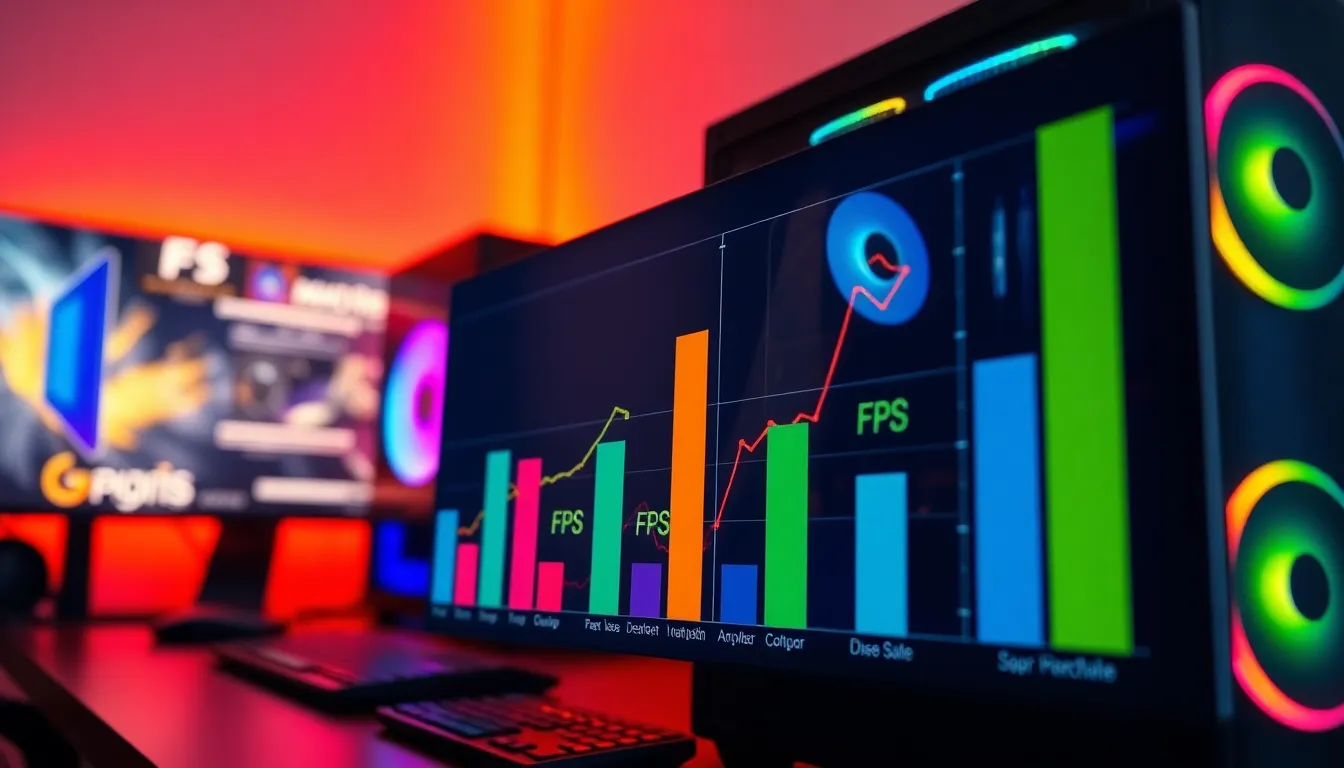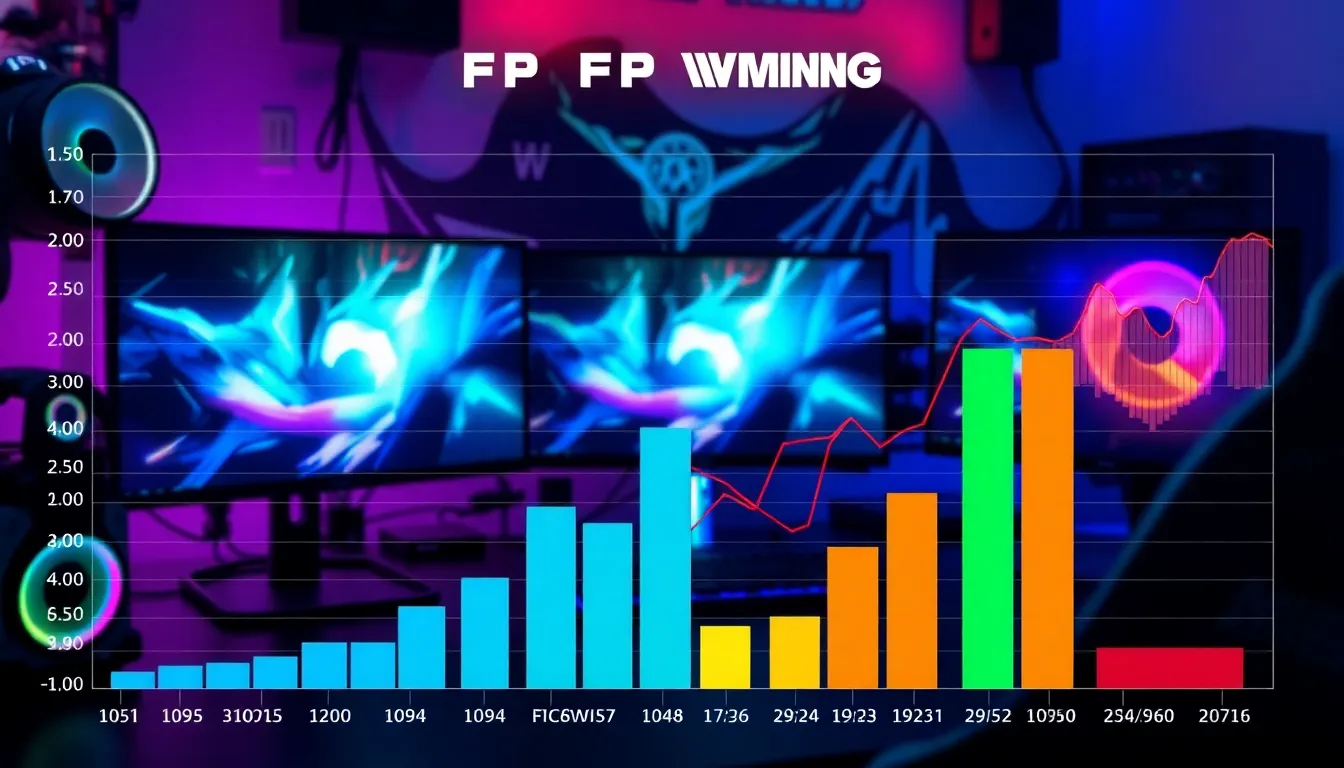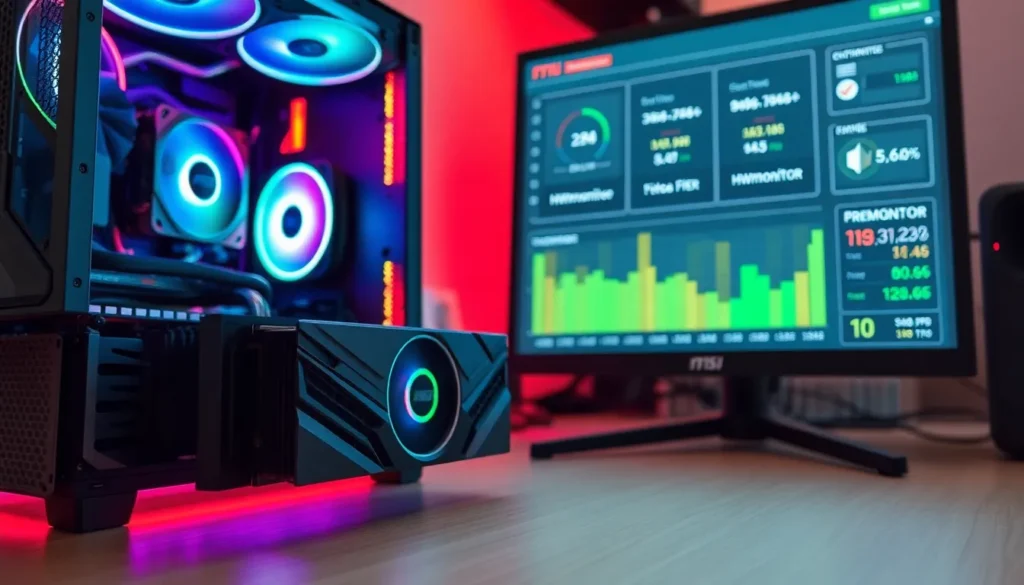In the world of gaming, few things matter more than frames per second, or FPS. It’s the heartbeat of every epic battle and the secret sauce behind smooth gameplay. But how do gamers decide which hardware will give them the ultimate edge? Enter FPS comparison graphs, the unsung heroes of the gaming universe. These colorful charts and graphs can turn a confusing sea of numbers into a clear picture of performance.
Understanding FPS Comparison Graphs
FPS comparison graphs present visual representations of frames per second across different hardware configurations. These graphs offer clear insights, allowing gamers to analyze performance metrics at a glance.
What Are FPS Comparison Graphs?
FPS comparison graphs illustrate the frame rates gaming hardware can achieve under various conditions. These visuals often display multiple game titles, settings, and hardware combinations. Data is typically organized into bars or lines, clearly showing performance differences. Gamers benefit from this information by easily comparing options. The clarity these graphs provide simplifies complex data and enables informed decision-making.
Importance of FPS in Gaming
FPS plays a critical role in gameplay experience. Higher frame rates result in smoother visuals, which enhance player immersion. Competitive gamers prefer a minimum of 60 FPS for an optimal experience, as it reduces motion blur and input lag. Frame rates below this threshold may lead to choppy gameplay, affecting performance in fast-paced scenarios. Understanding FPS is vital since certain genres, like first-person shooters, require quick reaction times. By prioritizing frame rates, players gain a distinct competitive edge in their gaming adventures.
Analyzing Different FPS Comparison Graphs

FPS comparison graphs provide insights into gaming performance, making it easier for gamers to evaluate hardware options. These visuals distill complex data into formats that show how different systems perform.
Types of FPS Comparison Graphs
Bar graphs, line graphs, and scatter plots represent popular types of FPS comparison graphs. Bar graphs display frame rates across various hardware configurations, highlighting differences at a glance. Line graphs illustrate performance trends across multiple resolutions or quality settings, offering insights on how hardware performs under different conditions. Scatter plots allow for a visual comparison of numerous data points, which helps users see the relationship between hardware performance and FPS.
Key Metrics to Consider
Frame rates, minimum and average FPS, and graphical settings serve as essential metrics in FPS comparison graphs. Maximum FPS indicates peak performance during gaming sessions. Minimum FPS reveals the lowest performance under heavy loads, which can affect the gaming experience. Average FPS provides an overall performance snapshot, giving players a balanced view of hardware capabilities. Graphical settings in these graphs represent the level of detail and effects used, influencing frame rates across different hardware.
How to Interpret FPS Comparison Graphs
Interpreting FPS comparison graphs involves understanding how to extract meaningful data from the visuals. Gamers analyze various configurations to gauge hardware performance efficiently.
Reading the Graphs Effectively
Bar graphs clearly display frame rates across multiple hardware configurations, making it easy to spot top performers. Line graphs demonstrate trends, allowing players to see how performance changes at different resolutions or settings. Scatter plots provide a broader view, showcasing relationships between numerous data points for in-depth analysis. Attention to minimum and average FPS readings helps gamers identify hardware limitations. Comparing each graph type helps in making informed decisions regarding upgrades or purchases.
Common Misinterpretations
A common mistake involves focusing solely on peak frame rates, which can mislead gamers about real-world performance. Players may overlook how minimum FPS affects gameplay experiences, especially during intense moments. Another frequent misunderstanding pertains to graphical settings; not all hardware performs well across varied configurations. Some may misinterpret trends, thinking that a higher average FPS guarantees better gameplay in every scenario. Understanding these nuances ensures more accurate assessments when selecting gaming hardware.
Tools for Creating FPS Comparison Graphs
Crafting FPS comparison graphs requires precise tools that assist in data visualization and performance analysis. Utilizing effective software options and adhering to best practices ensures accuracy and clarity in the outcome.
Software Options
Many software options cater to FPS comparison graph creation. Applications like MSI Afterburner offer real-time FPS monitoring and overlay capabilities. Other tools, such as FRAPS, provide essential frame rate statistics and recording functionality. Additionally, tools like Excel or Google Sheets allow for customizable graph creation, enabling detailed data representation. Gamers often benefit from dedicated benchmarking software, such as 3DMark or Unigine Heaven, which deliver performance metrics along with visual graph outputs. Each software brings unique features that cater to various needs, enhancing the overall data analysis process.
Best Practices for Data Collection
Effective data collection enhances the quality of FPS comparison graphs. First, choosing consistent testing environments for all benchmarks provides reliable results. Gathering data across multiple game titles ensures a well-rounded view of hardware performance. Recording frame rates at various graphical settings presents a more comprehensive analysis. Using a sufficiently powerful rig during testing helps identify hardware limitations. Noting temperature and load conditions can also reveal crucial insights into performance consistency. Following these best practices allows for accurate comparisons that gamers can trust when selecting hardware.
FPS comparison graphs serve as indispensable tools for gamers seeking to optimize their hardware choices. By distilling complex performance data into clear visuals these graphs enable players to quickly assess frame rates across various configurations. Understanding the nuances of different graph types enhances a gamer’s ability to make informed decisions.
With the right tools and best practices for data collection gamers can ensure accurate comparisons that reflect real-world performance. This knowledge not only elevates their gaming experience but also provides a competitive edge in fast-paced environments. Embracing FPS comparison graphs is a step towards achieving smoother gameplay and maximizing hardware potential.








